We find out what happened to Akhenaten….
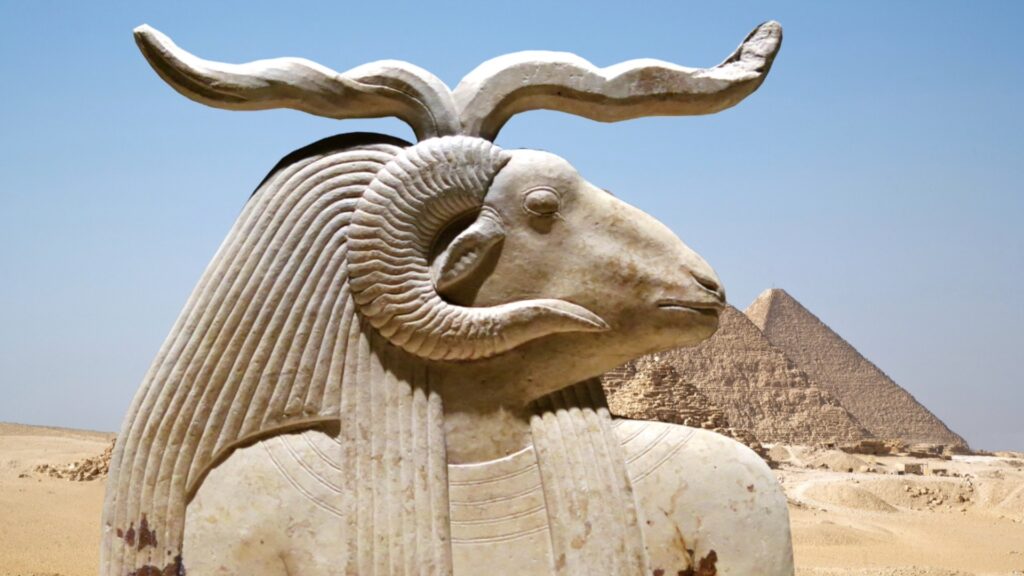
As usual, full text is below the fold.
Continue reading “Akhenaten, part three”Yet Another Unitarian Universalist
A postmodern heretic's spiritual journey.
We find out what happened to Akhenaten….

As usual, full text is below the fold.
Continue reading “Akhenaten, part three”The Pharaoh Akhenaten decides to get rid of all the old gods. Queen Nefertiti doesn’t agree. The Chief Priest has an idea….
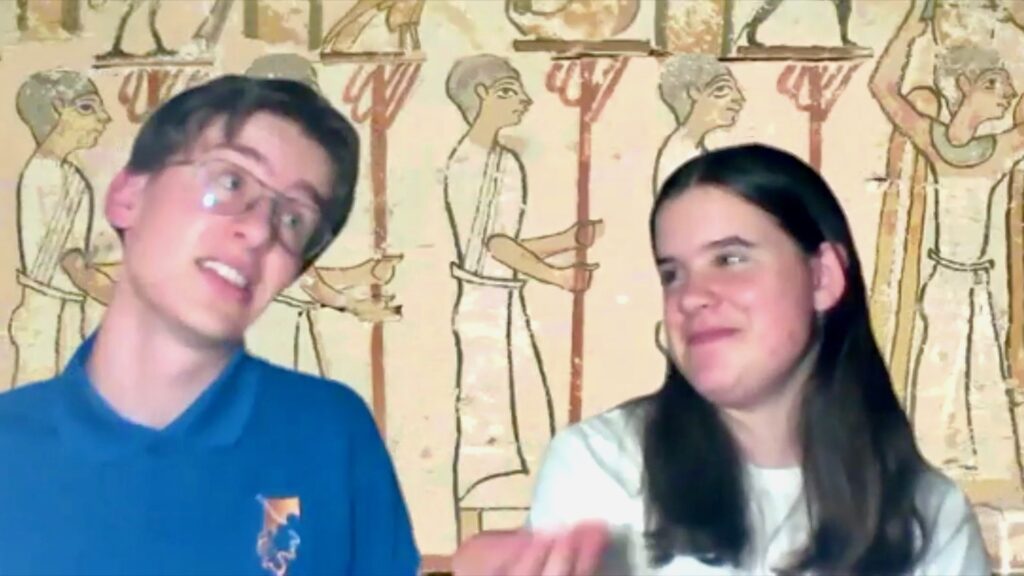
As usual, the full script is below the fold….
Continue reading “Akhenaten, part two”There used to be a Unitarian curriculum on the Pharaoh Akhenaten, purportedly the first monotheist, maybe the first unitarian. This is my take on the Akhenaten story….
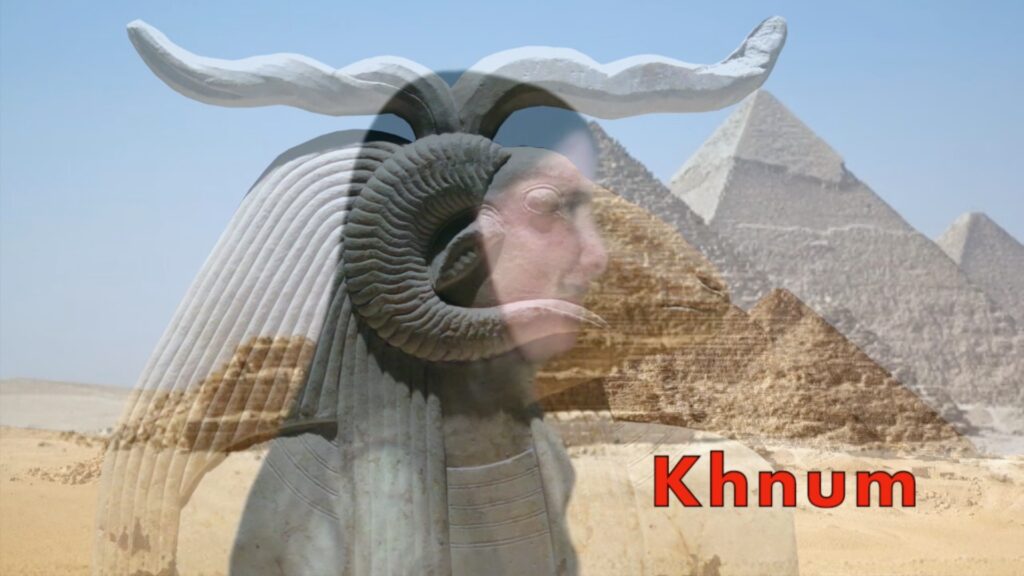
As usual, the full text of the script is below.
Continue reading “Akhenaten, part one”Quite a few years ago, when I was visiting the Museum of Fine Arts in Boston (MFA), I saw the ancient Egyptian board game Senet made out of faience (a type of pottery) and wood. Scholars and board-game-lovers have invented modern rules for Senet, based both on ancient Egyptian depictions of people playing Senet and on the several surviving copies of the game. I’ve read through several modern reconstructions of the game, but all the modern rules seem overly complicated. I wanted a set of rules that would be easy for school aged children to learn.
This week I came up with a simple set of rules, rules which remain fairly consistent with what is actually known about the game but are easily learned by school-aged children. The rules are below the fold.
The interesting thing about Senet is that it can be understood to represent the journey of the ba (roughly equivalent to soul) after death through the underworld to some kind of eternal life — it’s not just a game, it’s religion! Some day, I’ll write a lesson plan that ties Senet to ancient Egyptian religion. In the mean time, it’s still a fun game.
Above: The game board I made, printed out and trimmed to size. I used whatever I had around the house for playing pieces — 5 light-colored cubes, and 5 coins (mostly old Boston subway tokens). I made throwing sticks out of some pieces of wood I happened to have (popsicle sticks would work better), and I used a rubber stamp to put an Egyptian scarab beetle on one side so each stick has one clear side and one marked side.
Rules for playing Senet follow…. Continue reading “Senet, an ancient Egyptian game”
Isis is a well-known Egyptian goddess who needs little introduction. This beautiful little sculpture of Isis dates from a period when the Romans ruled Egypt; so Isis is wearing an Egyptian headdress, but she’s also wearing Roman clothing.
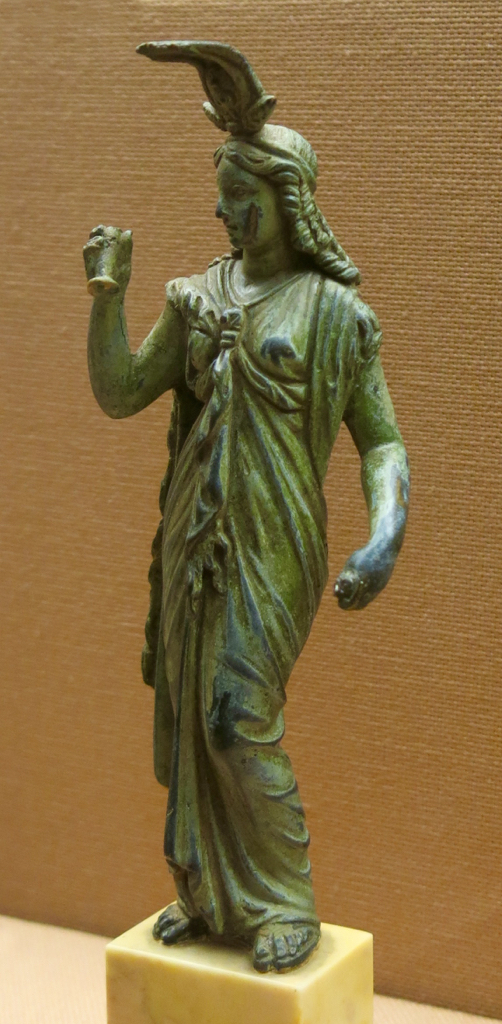
Above: Isis with sistrum, from Roman Imperial period, c. 100 BCE to 200 CE; bronze. Boston Museum of Fine Arts, accession no. 04.1713.
She is shaking a sistrum, an small percussion instrument that was used almost exclusively by women. Kara Cooney, a professor of Egyptian art and architecture, interprets the sistrum in terms of sexuality: “The sistrum was a kind of rattle — a wooden handle supporting bars of metal, each piercing small rings that clanged together when the instrument was vibrated. The sistrum itself represented human sexuality — round objects penetrated by a phallic rod holding them in place” (1). This interpretation could be accurate, but it could be overly influenced by Freud and Co., and therefore anachronistic.
The archaeologist Joyce Tyldesley offers another interpretation; she says the sistrum, which “was played only by women,” was “a rather large loop-shaped rattle with a long handle, often featuring the head of Hathor [another Egyptian goddess], which had initially represented the papyrus reeds of the Nile Delta where, mythology decreed, Hathor had been forced to hide with her young son. Eventually the sistrum lost all trace of its original meaning and instead started to serve as a religious symbol for life itself. It consequently become absorbed by other deities, and was particularly identified with the cult of Isis at the end of the Dynastic period.” (2) And this sculpture in fact does date from the end of the Dynastic period, the time when Isis had taken over the sistrum form Hathor.
Thus in this sculpture, we see the goddess Isis at the end of some three millennia of change and development. She is wearing the flowing robes of Rome rather than the simple sheath dress of Dynastic Egypt. She wears a headdress that identifies her as Isis, though it is not the older stepped headdress of Isis seen in sculptures from 500 years earlier (see, e.g., the sculpture of Isis below, from c. 685-525 BCE). And she has taken over the sistrum from Hathor and other goddesses.
Although their adherents may say otherwise, art and material culture does not show gods and goddesses as unchanging and fixed; instead, they grow and evolve over time.
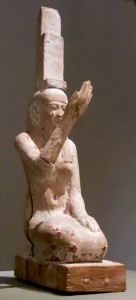
Above: Isis mourning Osiris, from Dynasty 26, c. 685-525 BCE; wood. Boston Museum of Fine Arts, accession no. 72.4172.
Notes:
(1) Kara Cooney, The Woman Who Would Be King (New York: Broadway Books, 2014), p. 39.
(2) Joyce Tyldesley, Daughters of Isis: Women of Ancient Egypt (London: Penguin, 1994), p. 139.
Taweret is one of the deities who was a fairly common presence in ancient Egyptian households. Sculptures of Taweret have the head of a hippopotamus and the body of a female human being, and the arms and legs of a lion (note 1); though of course the physical manifestations of ancient Egyptian deities were not thought to adequately represent the actual deity. Sculptures of her “held the attribute of the sa [an ancient Egyptian symbol of magical protection] in her hands and sometimes also the ankh or a torch, the flame of which was supposed to expel typhonic forces” (note 2).
A statue of Taweret would typically stand in a niche in a house, with perhaps an offering table. A Taweret sculpture might also be placed in bedrooms, to prevent sleeping humans from being assaulted by demons or ghosts. According to some accounts, she was married to the god Seth (note 3).
Below is a fine tiny sculpture of Taweret, made of faience sometime in Dynasties 26-30, now in the Boston Museum of Fine Arts (accession number 64.2252). She is holding the sa, and you can see her hippo head, human body, and lion limbs. She is fearsome enough to give you a measure of assurance that she will indeed protect you, as a household god should; but she also appears friendly enough that I would not mind having her in my household.
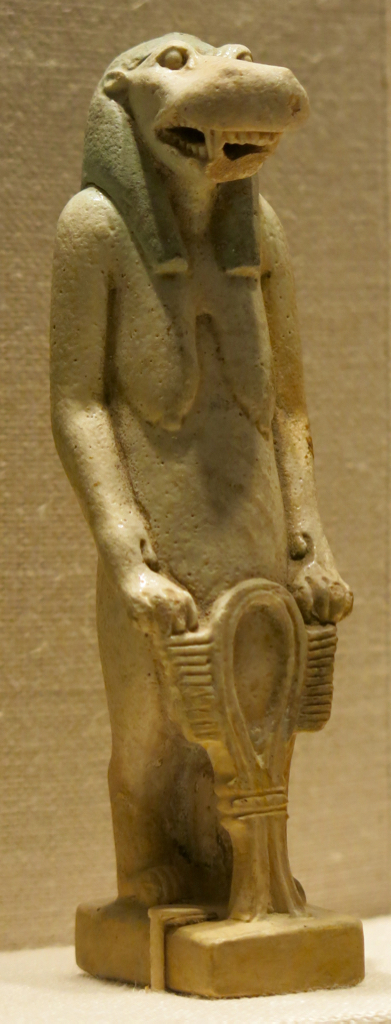
Notes:
1. Garry J. Shaw, The Egyptian Myths: A Guide to the Ancient Gods and Legends (Thames and Hudson, 2014), p. 155.
2. Manfred Lurker, An Illustrated Dictionary of the Gods and Symbols of Ancient Egypt [Thames and Hudson, 1980/2006], English language edition of Gotter und Symbole der Alten Agypter, rev. and enlarged by Peter A. Clayton, p. 119.
3. Shaw, pp. 152, 158, 55.